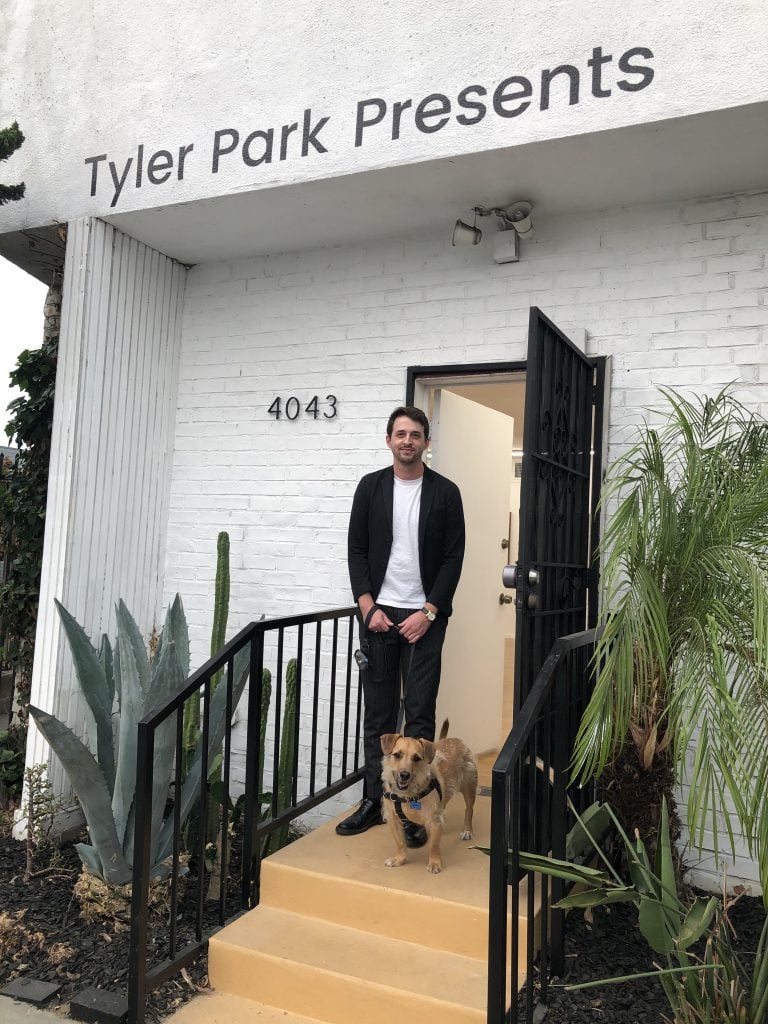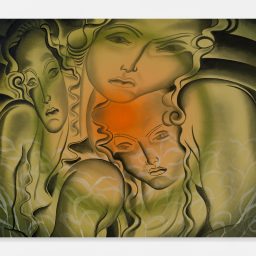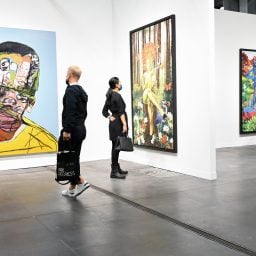Tyler Park calls it his “bake sale” moment: the time last June when, after months of dreaming and planning to open his own gallery, he launched a fundraiser to do just that. But instead of selling cookies, he started hawking black hats with his name on them. He was making $100 apiece selling the caps to friends, family, and anyone else willing to invest in his goal of building a new gallery to show emerging talents like Evan Whale and Andrea Chung in Los Angeles during the pandemic.
“I had six months of living expenses from my own money and $8,000 from the bake sale to start my business,” said Park, who, after nearly three years as a director at Klowden Mann, officially opened Tyler Park Presents in L.A.’s Silver Lake neighborhood last September. “I have put every cent into the gallery.”
As Park was starting out, two veteran dealers were starting over. Kim Bourus and Janice Guy teamed up with Marina Chao, a curator at the International Center of Photography, for a Brooklyn spinoff of Bourus’s gallery, Higher Pictures Generation, that represents the combined expertise of three generations of women working in the arts. For them, the pandemic was a reminder to chase their dreams.
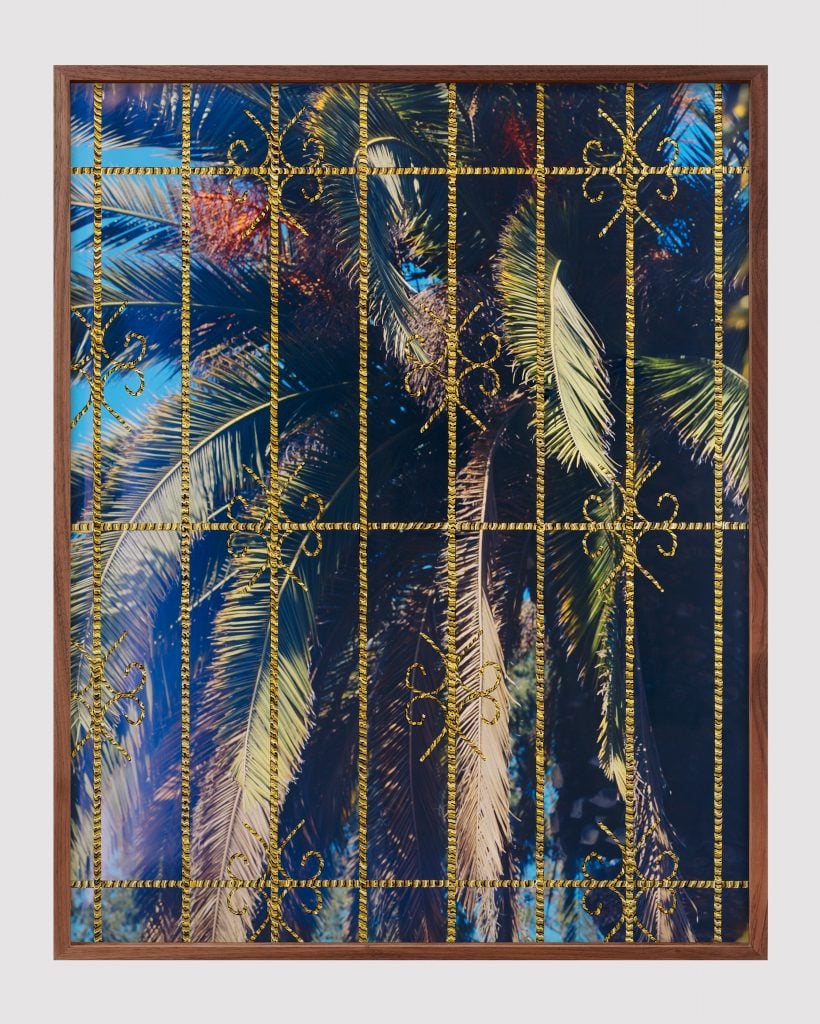
Evan Whale, In My Room (The Santa Anas) (2021). Courtesy of the artist and Tyler Park Presents, Los Angeles.
“The gallery became our sense of hope,” Chao told Artnet News. “It gave us structure during the pandemic so we could continue doing what we love.”
Most would not expect the Covid-19 pandemic to produce such a fertile business environment, but during the catastrophe several new galleries have bloomed, and a postponed Armory Week has become an unexpected international debut for many of them.
The Independent art fair, taking place September 10–12 at the Battery Maritime Building, will have in attendance six galleries that opened during the pandemic. The Future Fair—which was itself born during the pandemic—has seven in its first in-person iteration, at the Starrett-Lehigh Building, September 10–12 (both fairs’ VIP preview is September 9). Notably, the Armory Show itself, which runs through the same weekend, lacks such newcomers.
“Trying periods or moments of crisis are often times when grassroots initiatives flourish,” said Rebeca Laliberte, one of the Future Fair’s founders. “For these new gallery owners, it was likely reflecting on what one can create that makes an impact within their communities, coupled with a shift in the real estate market that offered more accessible rent opportunities.”

The team at TERN Gallery, from left, Jodi Minnis, Amanda Coulson, and Lauren Perez. Photo by Melissa Alcena, courtesy of TERN Gallery, Nassau, Bahamas.
For some newly minted gallerists, the pandemic merely provided the final push. After nearly a decade running the National Art Gallery of the Bahamas (and a stint as director of New York’s Volta fair), Amanda Coulson decided it was time for a change. For some time, she had toyed with the idea of running a gallery to represent Caribbean artists locally, during a moment when blue-chip galleries from overseas were suddenly interested in the region. Her business partner, Lauren Holowesko Perez, had connections to the hotel sector and helped assemble a lineup of investors ready to support the gallery, which also planned on building its own space with a separate storage facility.
Then the lockdowns started. Their investors pulled out, and plans of opening the gallery were put on hold. Coulson was momentarily out of a job. “But then I realized business was still happening,” she told Artnet News, explaining that the art world’s transition to online sales was promising. “I thought, maybe now is the time to invest and take risks so when the pandemic is over, we will be established.”
So last December, the pair leased a former coworking space in Nassau and transformed it into TERN Gallery’s base of operations. Future Fair became a goalpost for the gallery because it would mark the dealer’s international debut.
TERN arrives in New York with a message. “We have a very specific look for our booth, because we are working against a stereotype of the Caribbean,” explained Coulson, saying that her exhibit will be very monochrome and minimal. “We know people think it’s all going to be coconut art and pink flowers, but we want to show that we come from a place with conceptual artists.”
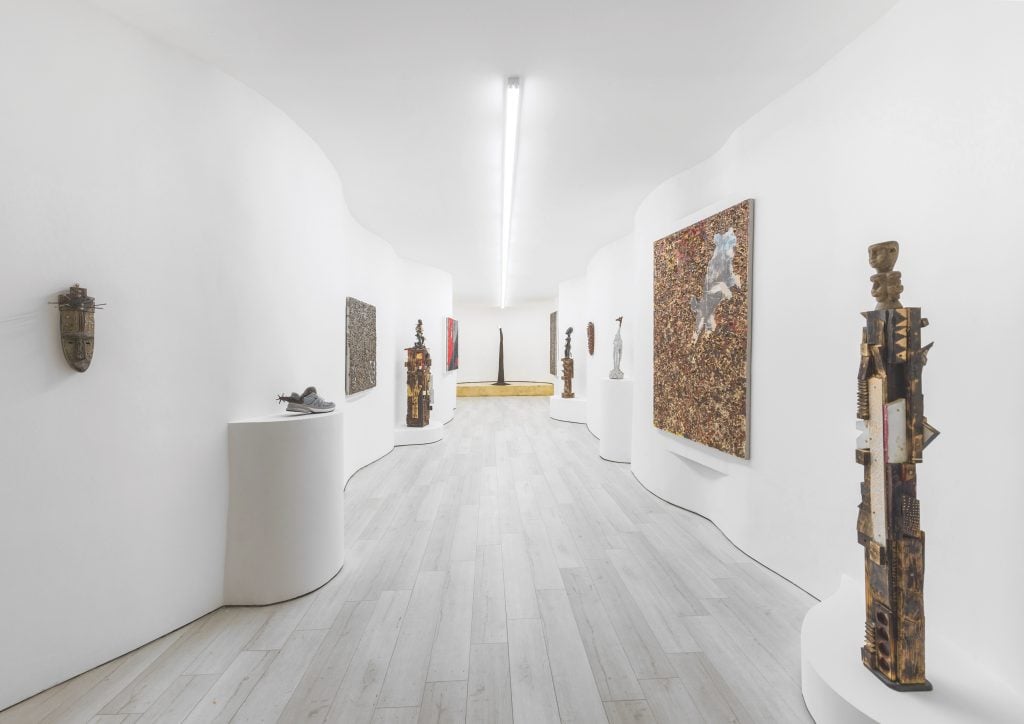
Installation view of “Emmanuel Massillon: As Clear As Mud,” curated by Tara Fay Coleman and currently on view at Swivel Gallery in Brooklyn. Photo courtesy of the artist, Swivel Gallery, and Cary Whittier.
Upending expectations has also been a motivator for Graham Wilson, the man behind Swivel Gallery in the Bedford-Stuyvesant neighborhood of Brooklyn, which opened in January 2021.
“The pandemic kind of leveled the playing field because everyone had to stop what they were doing,” explained Wilson, a successful artist in his own right. “It was an opportunity for younger folks to get their foot in the door and grab people’s attention.” He transformed an old tabernacle into an idiosyncratic gallery of curvaceous walls, and has presented emerging artists who are pushing boundaries in sculpture, film, and painting.
Wilson hopes to turn heads at the Future Fair in a joint presentation with another first-timer, the Lower East Side gallery Trotter&Sholer, that includes macabre ceramic sculptures by Derek Weisberg and poetic prints by Loujan Perez. If the booth is successful, it will help Wilson give back to the community; he has pledged to donate 10 percent of the gallery’s sales back to community nonprofits.
“I wanted to keep the money in my neighborhood,” he explained. Wilson has lived in Bedford-Stuyvesant for almost 20 years and decided to establish his space there as a cultural resource. “With everything shifting online, there was an opportunity for my gallery to open in a place that’s a bit more out-of-the-way than normal.”
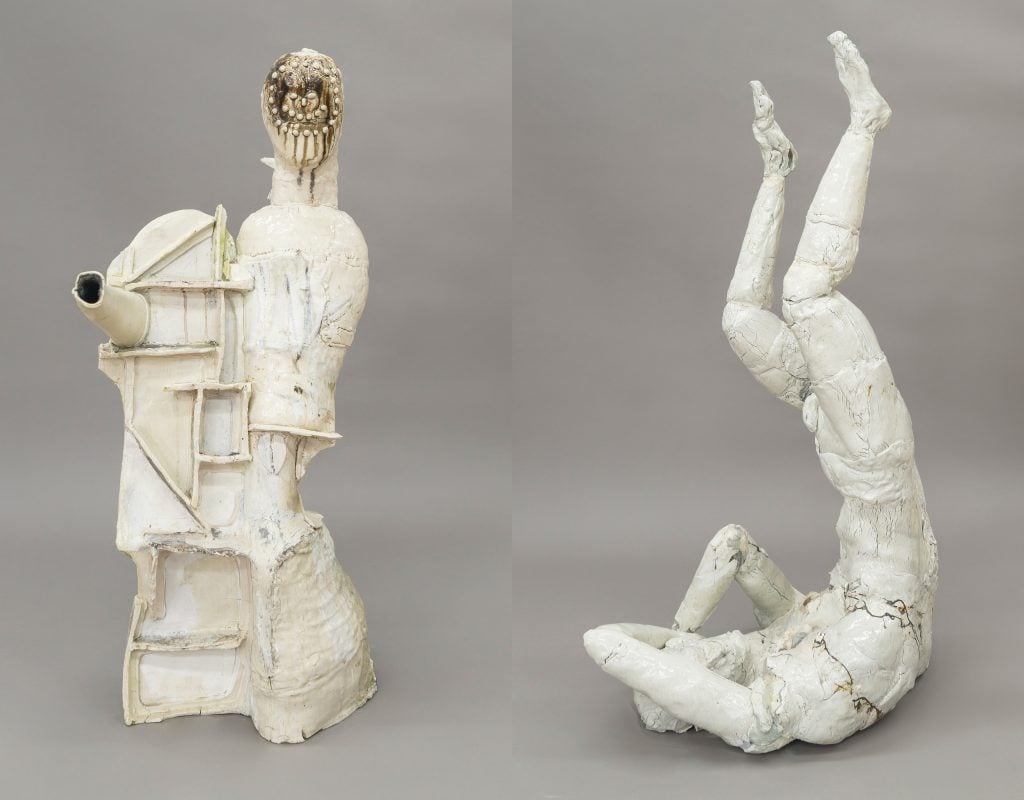
At Future Fair, Swivel Gallery and Trotter&Sholer are making a joint presentation of works by Derek Weisberg, including You Can’t Get Here Fast Enough II (2018–2021) and
Empire in Decay II (2021). Left, courtesy the artist Swivel Gallery, and Cary Whittier; right, courtesy Trotter&Sholer.
But the pandemic has also taken its toll on the industry, increasing the stakes for businesses just starting out. In 2019, gallerists earned an estimated $16.6 billion from participating in art fairs, which represented nearly 43 percent of their annual sales, according to the latest Art Basel and UBS Art Market report. Dealers’ take was functionally halved during the height of the pandemic in 2020, when more than 60 percent of art fairs around the world had to cancel, and before the pivot to OVRs.
Future Fair experienced its own setback, having to delay its inaugural in-person edition last year because of the pandemic. Nearly half of its previously accepted galleries were unable to participate this year and have been replaced by new galleries. And yet the fair’s organizers remain optimistic, describing the art market as resilient and strong.
“We’ve witnessed a democratization of who has access to engaging with and buying art through these new digital interfaces,” said Laliberte. “It is a big reason why we’ve invested so much as a fair into online storytelling and digital exhibitions that act as companions to the physical show.”
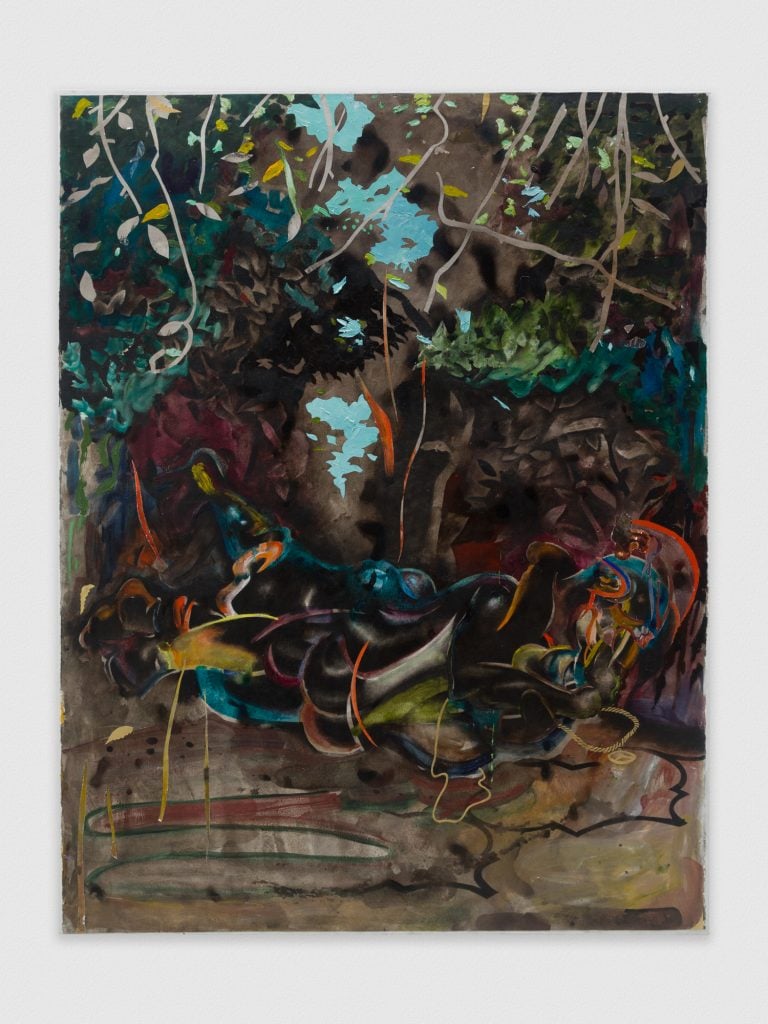
Leasho Johnson, Stealing stories from the sky god (Anansi #3) (2020). Photo by Evan Jenkins, courtesy of TERN Gallery, Nassau, Bahamas.
Meanwhile, galleries are finding creative ways to circumvent rising shipping fees that can run to tens of thousands of dollars for a single canvas. TERN Gallery, for example, decided to showcase Caribbean artists living in the United States to reduce overhead costs. Its booth at Future Fair features paintings and prints by the Jamaican artist Leasho Johnson, who lives in Chicago, and the Trinidadian artist Rodell Warner, who lives in New York.
These young galleries are making a gamble that art fairs, even amid vacillating travel rules and entry controls, will be worth their investment. And in the days leading up to Armory Week, many of these dealers have come to see the showroom floor as a proving ground for their businesses.
“When we first opened during the pandemic, it was really difficult,” said Park. “We were doing appointments only and by capacity, it was about two people at a time. By March, things started to pick up as the vaccine rollout helped people feel more comfortable about spending money.”
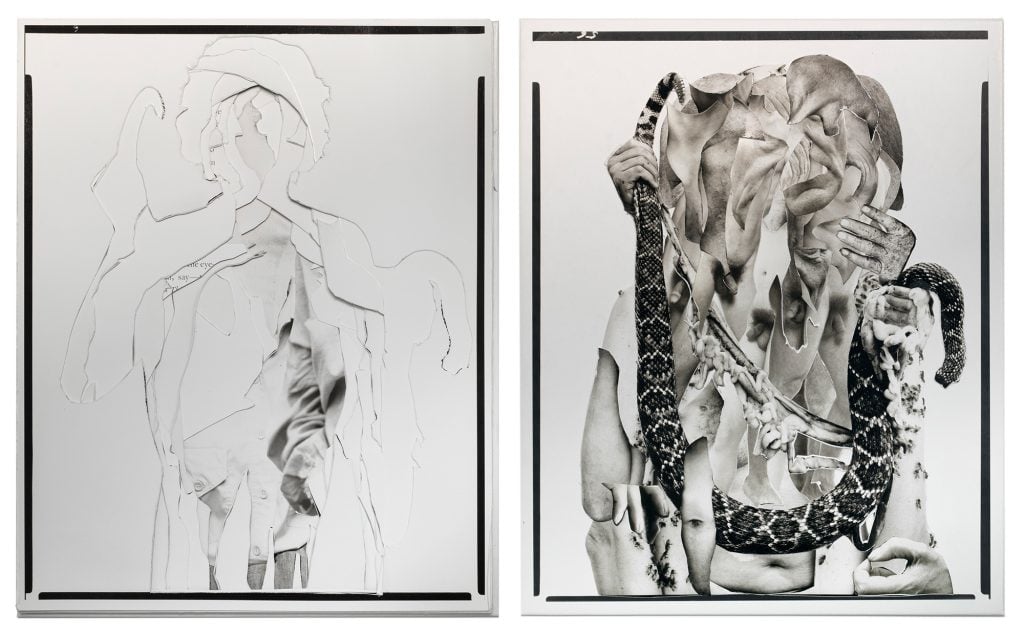
At Independent, Higher Pictures Generation is presenting new works by Justine Kurland, including the diptych Portraits (Negative Space) and Portraits (Additive Space) (2021). Images courtesy of the artist and Higher Pictures Generation.
With two weeks to go until Future Fair, Park was shipping his inventory cross-country to New York when eager collectors came knocking. He has already sold one of the major pieces in his presentation, a painting by Whale called In My Room (Santa Anas) (2021). He hopes to add red “sold” stickers to a few more pieces before opening day. “As a new gallery, I want to show people that I can compete on this greater level, even if my business is only a year old,” he added. “I want to show that I can really do this.”
Of course, welcoming newcomers benefits fairs, too. “We are always interested in identifying distinctive, generational voices,” said Matthew Higgs, Independent’s director and chief curator. “Historically these galleries would have operated at the ‘margins’ of the contemporary art world, yet their ideas are increasingly central to the larger conversations that are now taking place.”
See the full list of first-time galleries exhibiting at the Armory Week fairs below.
Independent:
BROADWAY (New York, NY)
Higher Pictures Generation (Brooklyn, NY)
The Ranch (Montauk, NY)
New Canons (New York, NY)
REGULARNORMAL (New York, NY)
Off Paradise (New York, NY)
Future Fair:
REGULARNORMAL (New York, NY)
Seasons LA (Los Angeles, CA)
SUNNY NY (New York, NY)
Swivel Gallery (Brooklyn, NY)
TERN Gallery (Nassau, The Bahamas)
Trotter&Sholer (New York, NY)
Tyler Park Presents (Los Angeles, CA)
